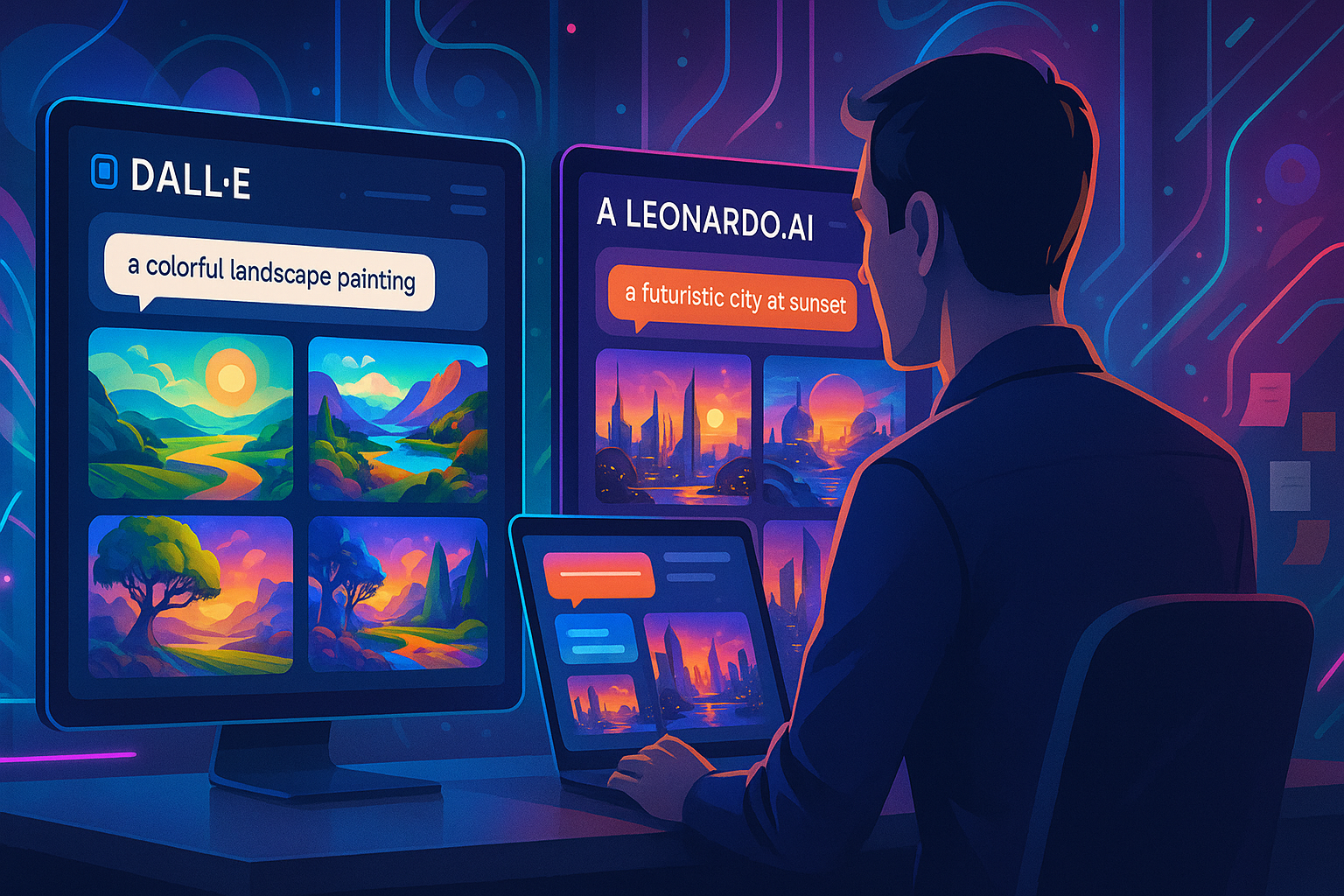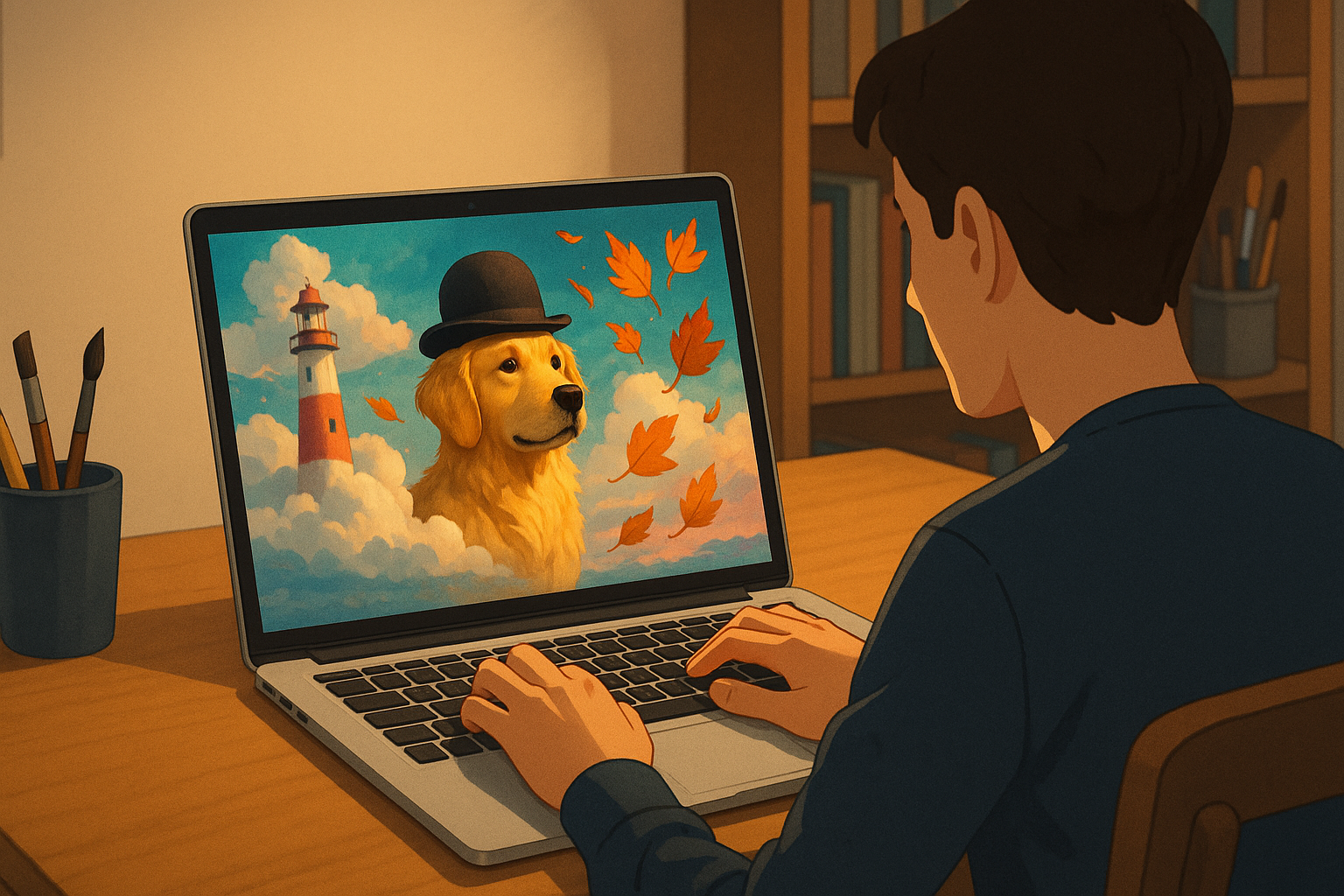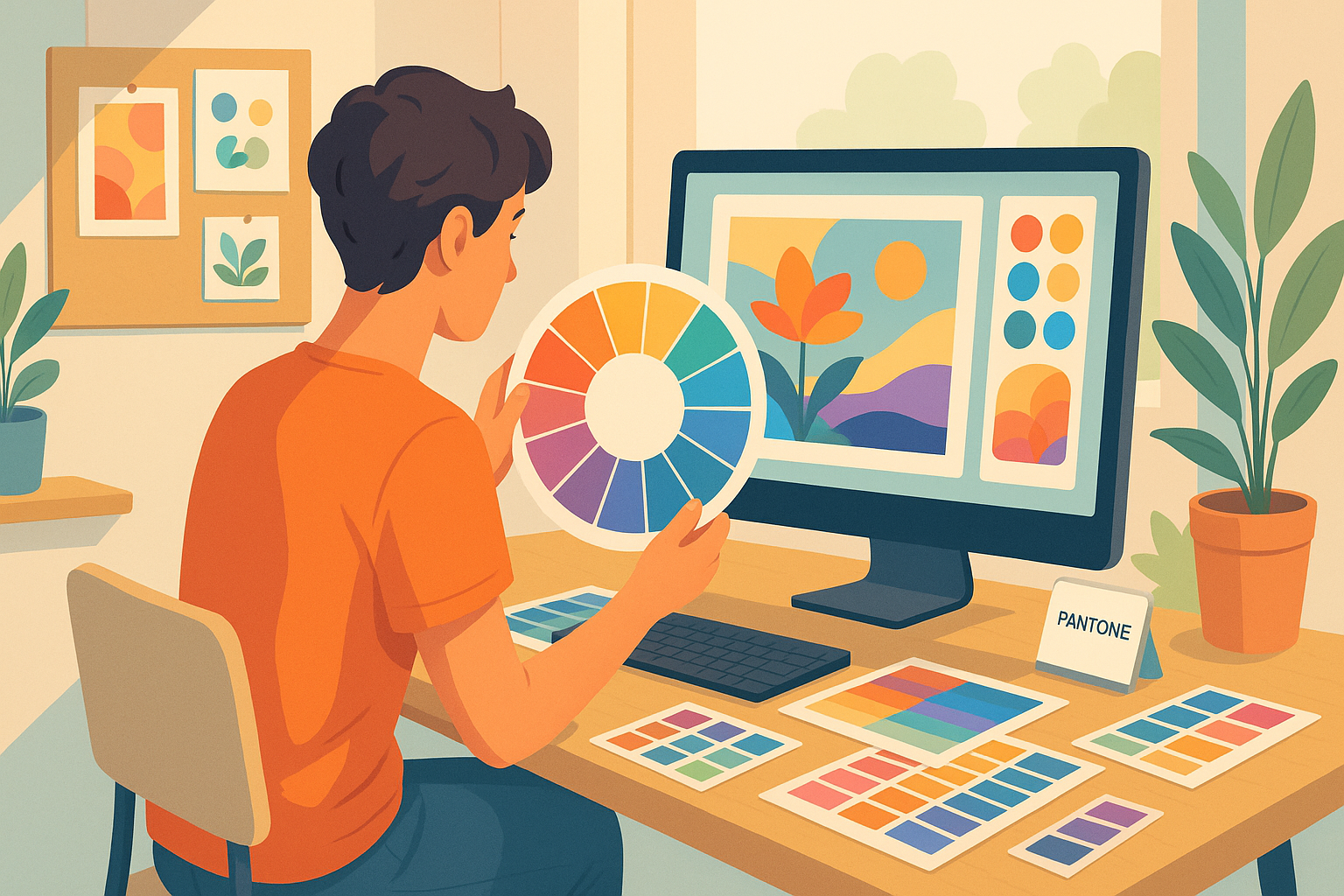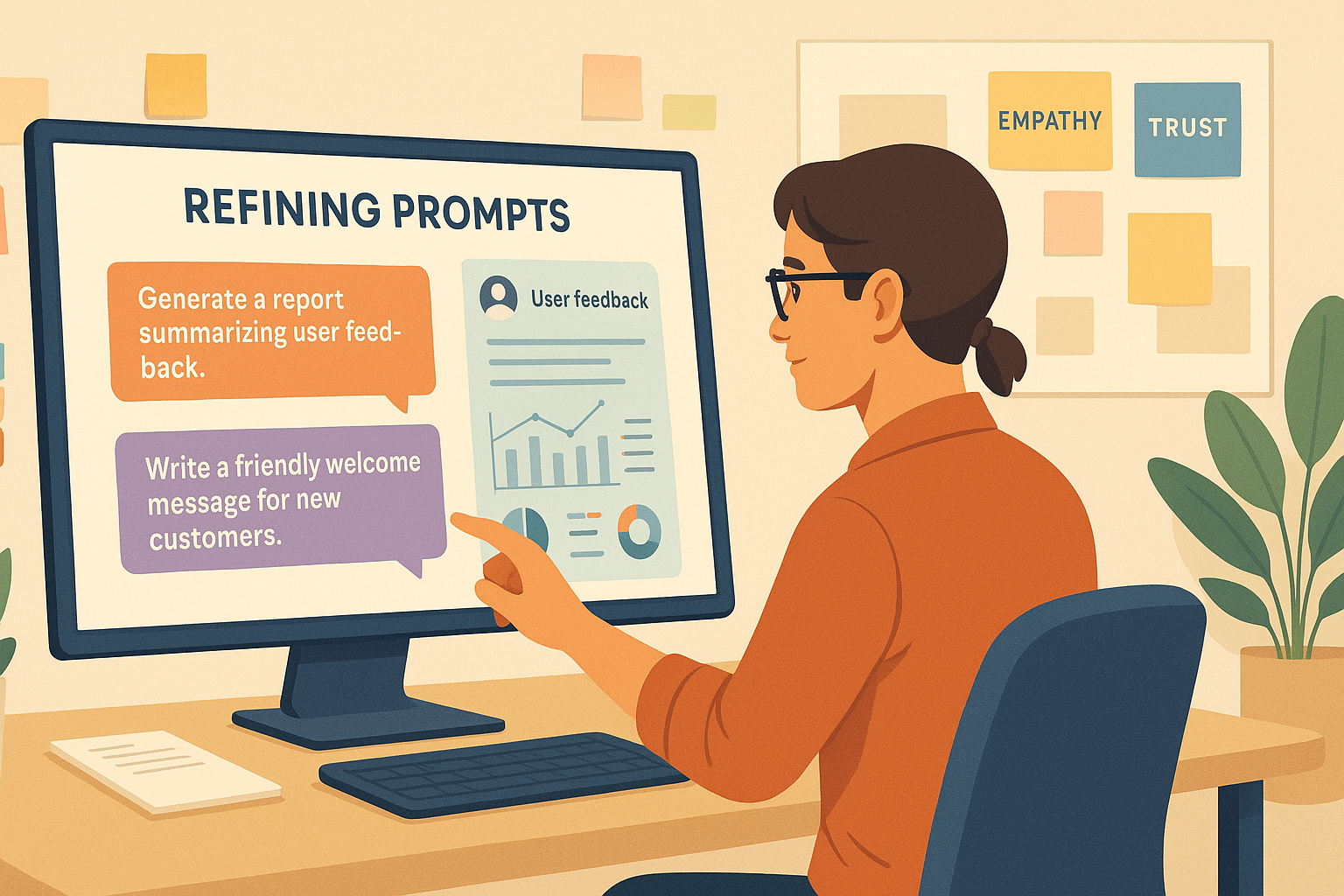DALL·E vs. Leonardo AI: Which Image Generator Reigns Supreme?

Introduction: The Rise of AI Image Generators
Artificial intelligence has revolutionized creative workflows, and nowhere is this more evident than in AI-powered image generators. Tools like DALL·E and Leonardo AI empower designers, marketers, and hobbyists to produce high-quality visuals from simple text prompts. But with so many options available, which platform truly delivers the best results? This in-depth comparison explores their strengths, limitations, and ideal use cases to help you decide which image generator reigns supreme.
Overview of DALL·E
DALL·E is a powerful image generation model developed by OpenAI. Launched initially in 2021, DALL·E gained widespread attention for its ability to create imaginative, photorealistic images from highly specific prompts. The latest iteration, DALL·E 3, continues to improve realism, detail, and adherence to instructions.
Core Features and Capabilities
DALL·E offers a range of standout features, including:
- Prompt-to-Image Generation: Create visuals directly from natural language descriptions.
- Inpainting: Edit and modify portions of an image by describing what you’d like to change.
- Style Flexibility: Generate images in diverse styles, from photorealism to illustration.
This versatility makes DALL·E a popular choice for marketers, content creators, and designers alike.
Unique Strengths of OpenAI’s Model
One of DALL·E’s greatest strengths is its intuitive understanding of detailed prompts. Whether you’re specifying color palettes, composition, or artistic influences, DALL·E often produces images that align closely with your vision. Additionally, OpenAI’s model benefits from robust safety filters that limit harmful or inappropriate content generation.
Overview of Leonardo AI
What Is Leonardo AI?
Leonardo AI is an emerging image generator known for its emphasis on artistic control and customization. Designed to empower designers and creative professionals, Leonardo AI provides sophisticated tools to refine and iterate on generated visuals.
Core Features and Capabilities
Leonardo AI includes several capabilities that set it apart:
- High-Resolution Outputs: Generate large, detailed images suitable for commercial use.
- Style Transfer and Enhancement: Apply specific artistic styles to generated content.
- Batch Generation: Produce multiple image variations quickly to explore creative directions.
These features make Leonardo AI a compelling alternative for illustrators and branding professionals.
Unique Strengths of Leonardo AI
Leonardo AI excels at maintaining consistent artistic styles across batches and offers more granular control over prompt interpretation. Its streamlined workflow also caters to teams who need to generate and revise images collaboratively.
Ease of Use and Accessibility
Interface and User Experience
DALL·E offers a clean, intuitive web interface that makes generating images straightforward even for beginners. You enter your prompt, select any inpainting or editing options, and watch the image appear. The platform emphasizes simplicity, making it ideal for users who prefer minimal configuration.
Leonardo AI, on the other hand, provides a more feature-rich dashboard with additional controls for style, resolution, and batch generation. While this extra functionality benefits professionals, it can feel overwhelming to newcomers who just want to create a single image quickly.
Prompt Crafting Tools
Both tools offer prompt assistance, but in different ways. DALL·E’s autocomplete suggestions help refine your language as you type, ensuring your descriptions are clear and specific. Leonardo AI includes a library of example prompts and a prompt builder with sliders for adjusting style weight and creativity level.
Learning Curve Comparison
For beginners, DALL·E generally has a shorter learning curve thanks to its simpler interface and automatic defaults. Leonardo AI requires more time to master but offers greater creative control once you’re familiar with the options.
Quality of Generated Images
Realism and Detail
DALL·E consistently delivers highly realistic images with impressive detail, particularly when generating scenes based on precise descriptions. The model’s understanding of spatial relationships and lighting produces outputs that often look convincingly photographic.
Leonardo AI also produces detailed visuals but shines in artistic renderings and stylized outputs. While it can achieve realism, its strength is in illustration-like imagery with rich textures and unique artistic flair.
Style Versatility
DALL·E can switch between photorealism, cartoon styles, and abstract art with relative ease. Leonardo AI offers even more options for style transfer and customization, allowing designers to mimic famous art movements or blend multiple styles in a single composition.
Consistency of Outputs
Leonardo AI is particularly strong in maintaining stylistic consistency across multiple images generated from the same prompt. This makes it valuable for branding and campaigns that require cohesive visuals. DALL·E is excellent at variety but can sometimes produce subtle variations between outputs.
Speed and Performance
Generation Times
In most cases, DALL·E generates images within 15–30 seconds, depending on server load and image complexity. Leonardo AI takes slightly longer, often requiring 30–60 seconds per image, especially when producing higher-resolution outputs or multiple variations.
Resource Requirements
Since both platforms are cloud-based, there’s no need for powerful local hardware. However, Leonardo AI’s advanced features, such as batch rendering and high-resolution processing, may require a paid subscription tier to access reliably without throttling.
Scalability for Teams
Leonardo AI offers robust team management features, including collaborative folders, user permissions, and shared libraries of prompts and outputs. DALL·E is primarily designed for individual users but supports API integration for teams who want to build custom workflows.
Customization and Fine-Tuning
Prompt Weighting and Control
Leonardo AI stands out for its granular prompt controls. Users can assign weights to different parts of a prompt, emphasizing specific attributes like color schemes, moods, or styles. This enables precise customization and helps designers achieve exactly the look they envision.
DALL·E offers less direct weighting but excels at interpreting well-structured descriptions without extra parameters. If you prefer a simpler workflow with fewer technical adjustments, DALL·E’s natural language understanding can often get you close to your desired result with minimal tweaking.
Model Training and Personalization
Leonardo AI includes options for model fine-tuning, allowing users to upload reference images and train the AI to match a particular style or brand aesthetic. This is especially useful for agencies or enterprises that need consistency across campaigns.
DALL·E doesn’t currently offer user-level model training, focusing instead on general-purpose generation with broad capabilities. For many creators, this trade-off means faster results but less personalization.
Batch Generation Capabilities
Leonardo AI makes batch generation simple. You can create dozens of variations in a single run and compare outputs side by side. This is a huge timesaver when exploring multiple creative directions or presenting options to clients.
DALL·E does allow generating multiple images per prompt but emphasizes single-instance creation, with fewer built-in tools for managing large batches of outputs.
Integrations and Workflow Compatibility
API and Platform Integrations
DALL·E provides an official API through OpenAI, making it easy to integrate with custom applications, content management systems, and automated workflows. Developers can embed image generation into websites, chatbots, and design pipelines with relative ease.
Leonardo AI also offers an API, but with more advanced endpoints for managing fine-tuning, style transfers, and batch operations. This makes it a strong option for larger teams and enterprises who need deeper integration.
Compatibility with Design Tools
Both platforms allow you to export images in common formats (PNG, JPEG) for use in tools like Adobe Creative Cloud, Figma, and Sketch. Leonardo AI goes further by offering preset export templates for social media, presentations, and print collateral, which can streamline production workflows.
Export Options and File Formats
DALL·E and Leonardo AI both support high-resolution downloads. Leonardo AI typically offers more control over aspect ratios and DPI settings, making it easier to prepare assets for commercial print or large-scale displays.
Cost and Pricing Models
Free vs. Paid Tiers
DALL·E offers a limited number of free credits for new users, after which you’ll need to purchase additional credits or subscribe to a plan. This makes it accessible for experimentation before committing to paid usage.
Leonardo AI uses a freemium model with more generous initial credits but caps access to advanced features like batch rendering and high-resolution downloads in the free tier. Upgrading is often necessary for professional use.
Subscription Options
DALL·E’s pricing is credit-based, allowing you to pay as you go. Leonardo AI offers monthly and annual subscriptions, which include bundles of generation credits, higher priority processing, and team collaboration features.
Value for Different Use Cases
For solo creators or small businesses with occasional image needs, DALL·E’s pay-as-you-go model is cost-effective. For design studios or brands producing content at scale, Leonardo AI’s subscriptions often deliver better value due to unlimited batch generation and advanced controls.
Ethics and Content Policies
Safeguards Against Harmful Content
DALL·E has robust safety filters that block the generation of violent, adult, or politically sensitive content. These safeguards protect users and ensure outputs align with community guidelines. While this means some prompts are restricted, it helps prevent misuse of the technology.
Leonardo AI also enforces strong content policies, using both automated moderation and manual review to prevent the creation of harmful imagery. Users must agree to responsible use policies, and violations can lead to account suspension.
Intellectual Property Considerations
Both platforms generate original images, but copyright laws around AI-generated content are evolving. Typically, the user holds rights to outputs, but you should verify licensing terms—especially when using images commercially. Avoid prompts that request replication of trademarked characters or proprietary styles without permission.
Transparency and Responsible Use
DALL·E and Leonardo AI encourage transparency when using AI-generated images, especially in journalism, advertising, or educational contexts. Clear labeling helps audiences understand how content was created and maintains trust in your brand.
Community and Support
Documentation and Tutorials
DALL·E provides detailed documentation, prompt examples, and how-to guides on OpenAI’s website. The platform also includes interactive tutorials to help beginners start generating images within minutes.
Leonardo AI offers a comprehensive knowledge base, including video walkthroughs, advanced prompt guides, and style reference galleries. This wealth of resources supports both novice and professional users.
User Communities and Forums
DALL·E’s user community thrives on social media platforms like Reddit and Discord, where artists and developers share prompt tips, examples, and best practices. Leonardo AI has a dedicated forum and Slack community for deeper peer-to-peer learning and collaboration.
Customer Support Responsiveness
Both platforms provide email support, but Leonardo AI stands out with priority support for paid tiers and enterprise clients. DALL·E users can access help via OpenAI’s support portal, which typically responds within 1–2 business days.
Case Studies: DALL·E in Action
Marketing Campaigns
Many brands use DALL·E to create eye-catching campaign visuals without hiring illustrators. For example, startups have generated unique ad imagery tailored to specific demographics and cultural references, improving engagement and reducing creative costs.
Product Visualization
DALL·E has been used to visualize product prototypes before manufacturing, allowing teams to iterate on colors, materials, and form factors. This accelerates the design process and aids in stakeholder presentations.
Artistic Exploration
Artists often turn to DALL·E for inspiration, using AI-generated concepts as the basis for paintings, digital art, or multimedia installations. The model’s versatility enables experimentation across styles and themes.
Case Studies: Leonardo AI in Action
Branding and Illustration
Leonardo AI has gained traction among branding agencies seeking consistent illustration styles across campaigns. For example, design teams have used the platform to generate cohesive icon sets and hero illustrations tailored to specific color palettes and brand guidelines.
E-commerce Content
E-commerce companies leverage Leonardo AI to create product lifestyle images and promotional banners. Batch generation capabilities allow stores to quickly produce multiple variations for A/B testing, improving conversion rates and engagement.
Educational Resources
Educational publishers use Leonardo AI to develop custom visual content for textbooks and digital courses. By specifying age-appropriate styles and subject matter, designers generate engaging materials that align with curriculum standards.
Expert Opinions: Designers Weigh In
Strengths of DALL·E
Designers often praise DALL·E for its natural language understanding and photorealistic outputs. It excels at interpreting detailed prompts without requiring extensive configuration, making it a strong choice for quick-turnaround projects and experimentation.
Strengths of Leonardo AI
Leonardo AI stands out for its advanced control over style and batch production. Experts appreciate the ability to fine-tune outputs, maintain consistency, and explore multiple creative directions simultaneously.
When to Choose One Over the Other
If you value simplicity and fast results, DALL·E is the clear winner. For designers who need more granular control, large-scale generation, or enterprise workflows, Leonardo AI may be the better fit.
Conclusion: Choosing the Right Image Generator
There’s no one-size-fits-all answer to the question of which platform reigns supreme. DALL·E and Leonardo AI each offer unique advantages depending on your goals, team size, and creative process. DALL·E is unmatched in ease of use and prompt interpretation, while Leonardo AI shines in advanced customization and batch scalability. Ultimately, the best tool is the one that fits seamlessly into your workflow and empowers you to bring your ideas to life.
Frequently Asked Questions
Which AI generates the most realistic images?
DALL·E typically produces more photorealistic outputs, especially for detailed scenes and lifelike compositions.
What’s the best tool for beginners?
DALL·E’s intuitive interface and simple workflows make it ideal for beginners who want to start quickly without a steep learning curve.
Can you fine-tune models in both tools?
Leonardo AI supports model fine-tuning and style training, while DALL·E currently does not offer user-level training capabilities.
Are images commercially usable?
Yes, both platforms allow commercial use of generated images, but you should review their licensing terms to ensure compliance, especially for sensitive content.
How does pricing compare?
DALL·E uses a credit-based pay-as-you-go model, while Leonardo AI offers subscription plans with batch generation and advanced controls included. The best value depends on how often you plan to create images and which features you need.
Editor’s Choice
Get started with our best stories
Get all the latest posts delivered straight to your inbox.




